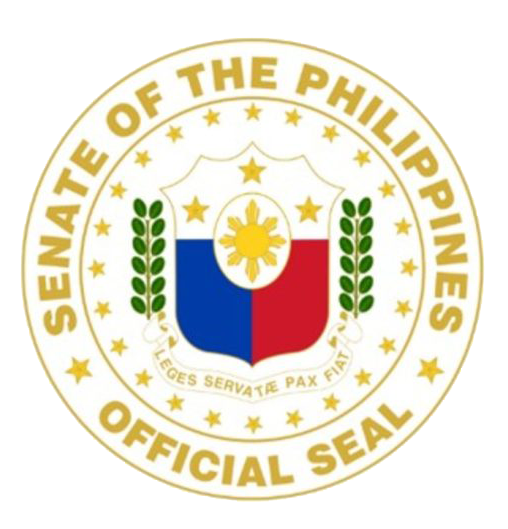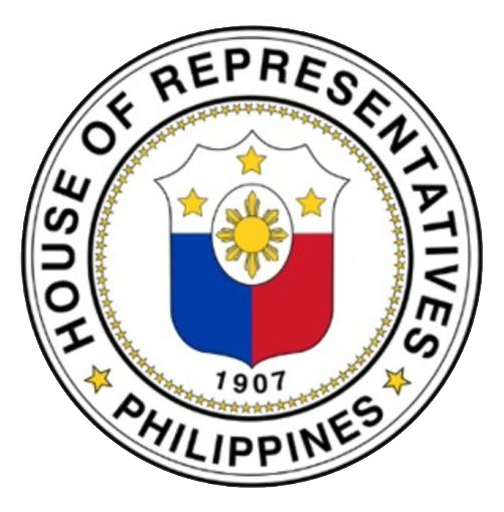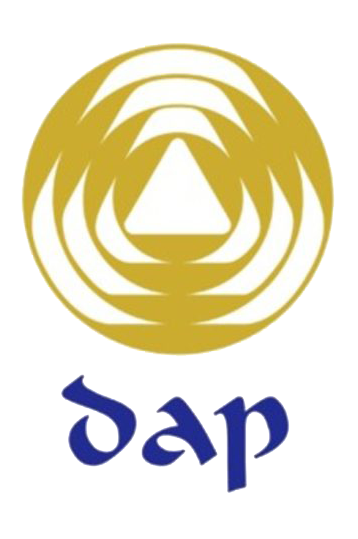What’s in the House?: Mapping the Climate Action Legislation
Rommel Reyes
07 December 2023
Introduction
On the 20th of July 2023, the Development Academy of the Philippines conducted an online lecture on “Climate Action for an Inclusive and Resilient Philippines” under the Capability Building on Innovative Leadership for Legislative Staff (CBILLS) Program. Dr. Rosa Perez, a Research Fellow of the Manila Observatory and the National Resilience Council, made a presentation on “The Climate Crisis in the Philippines and the Science Behind It.” After her session, four panelists from different sectors discussed their perspectives on the country’s climate action initiatives, namely, from the national government: Climate Change Commission (CCC) Commissioner, Atty. Rachel Herrera, local government: Del Carmen, Siargao Islands Mayor Alfredo del Coro II, business sector: Philippine Chamber of Commerce and Industry (PCCI) Chairperson on Environment and Climate Change, Dr. Jose Leviste Jr., and humanitarian organization: Philippine Red Cross (PRC) Secretary General, Dr. Gwen Pang.
As moderator of the lecture, here are my key takeaways highlighting the House of Representatives’ initiatives on climate action legislation:
Water and Food Security.
According to Dr. Perez, climate change alters weather and water patterns worldwide, resulting in droughts in some areas and floods in others. Specifically, the diminishing water supplies during droughts adversely impact agricultural production in the Philippines. Climate change also increases the occurrence of extreme events such as flash floods and severe storms, heat stress, and the increased prevalence of pests and diseases. All these phenomena brought about by climate change can push millions more people into poverty.
- Creation of the Department of Water Resources
In response to the looming water crisis in the Philippines, the House of Representatives has filed several bills to establish the Department of Water Resources as the national agency in charge of formulating policies, coordinating plans, and overseeing all water resources in the country. Hence, other government agencies with functions related to water resources, now numbering over 30, will be streamlined under the new Department.
Moreover, the authors proposed under these bills that the country’s water management policies and plans should adopt the Integrated Water Resources Management (IWRM) as the strategic framework to optimize economic and social welfare as it encourages coordinated development and management of water, land, and other resources while maintaining the sustainability of critical ecosystems and the environment. Lastly, to guarantee effective and adequate water and sanitation services, the bills also suggested the creation of a Water Regulatory Commission for a clear, reputable, and accountable regulatory framework.
- Mitigation of the Impacts of El Niño
A resolution in the House of Representatives was filed to direct the appropriate House Committees to look into possible interventions by the government in light of the El Niño phenomenon, which hit the country during the middle of 2023 and is expected to persist until 2024. The decline in agricultural output due to prolonged drought is believed to have affected high-value crops, thus stoking the already high inflation levels. Aside from agriculture, the El Niño phenomenon is also believed to have affected other sectors such as energy, water, health, and sanitation, and thus, the resolution directed the state agencies to mitigate its impacts on these sectors.
Extreme Weather Events
Dr. Perez shared that the extreme weather events caused by climate change have adverse impacts, which are catalysts for conflict and, thus, must be prevented or minimized. Hence, the House Committee on Climate Change unanimously approved House Bill No. 7278, or the “National Hazard Mapping Act,” in March 2023.
- National Vulnerability and Hazard Mapping
Under the said bill, the Department of Environment and Natural Resources (DENR) through its National Mapping and Resources Information Authority (NAMRIA), together with the Department of Science and Technology (DOST), CCC, and the National Disaster Risk Reduction and Management Council (NDRRMC) shall create and publish a national disaster map of the Philippines showing low-lying areas that are vulnerable to sea level rise as a result of climate change.
It shall also identify high-risk areas for natural hazards such as flood, storm surge, and rainfall-triggered landslide, as well as those situated on earthquake faults and exposed to volcanic eruption, including evacuation requirements and suggested evacuation sites and routes. The national disaster map will also use a comprehensive approach incorporating scientific instrument-based data and local and indigenous knowledge.
Resettlement of Sea Level Rise Victims
Cognizant of the fact that the problem of climate change cannot be solved through legislation alone, the House Committee on Climate Change is working with the House Committee on Housing and Urban Development to relocate the people of some islets in Tubigon, Bohol to a resettlement area on the main island of Tubigon where they will be safer. The two committees are coordinating with the Department of Human Settlements and Urban Development (DHSUD) to get an opinion from the Department of Justice (DOJ) on whether the escrow funds under the Balanced Housing Development Program can be utilized to develop the resettlement site on the main island of Tubigon. If the collaboration proves to be successful, the site will serve as the benchmark for resettling other Filipinos vulnerable to rising sea levels.
Restoration and Protection of Ecosystems
The lecture also highlighted the need to protect and restore ecosystems to increase our country’s resilience to the impacts of climate change. With this, the House of Representatives has passed on 3rd Reading two measures to address this concern. Two of the bills are the: “Amendment to the Wildlife Act” and “Philippine Ecosystem and Natural Capital Accounting System (PENCAS),” which came from the Committee on Natural Resources, and another one from the Committee on Climate Change, the “Peatlands Conservation” Bill.
- Amendment to the Wildlife Act
The necessity of protecting wildlife and addressing illegal wildlife trade became more urgent during the COVID-19 pandemic due to its zoonotic origin. Analysis of genetic samples from China appears to link the pandemic’s origin to raccoon dogs. House Bill No. 8586, an amendment to the Republic Act No. 9147 or the “Wildlife Resources Conservation And Protection Act,” aims to regulate the collection, ownership, trading, and use of wildlife and its derivatives and byproducts. Additionally, it seeks to fortify international efforts to end the transnational organized crime of trafficking and trade in wildlife. This bill was approved on 3rd Reading on August 16, 2023.
- PENCAS
House Bill No. 8443 or the Philippine Ecosystem and Natural Capital Accounting System (PENCAS) Act, identified as a Legislative Executive Development Advisory Council (LEDAC) Priority, seeks to institutionalize an information system and accounting framework that takes into account the country’s natural capital and its impact on the economy. Along with the gradual integration into the macroeconomic indicators, the PENCAS bill also aims to create a thorough data framework for creating natural capital statistics. It was approved on Third Reading on August 2, 2023.
- Peatlands Conservation
The proposed “Peatlands Conservation Act” seeks to enable our country to manage peatlands sustainably and conserve and protect the remaining ones, considering their value as a nature-based or ecosystem-based approach to address climate change. Peatlands are wetlands ecosystems where partially decomposed organic matter has accumulated over thousands of years under water-logged conditions to form carbon-rich soil called “peat.”
Peat forests can absorb carbon dioxide and release oxygen. They also store water, play host to flora and fauna, and act as carbon sinks. More than twice as much as the world’s forests combined are stored in peatlands. However, our peatlands are being decimated by forest clearing, drainage, land conversion, and burning. Thus, the bill prohibits these acts to avert further degradation, or worse, the disappearance of our peatlands since their degradation leads to the release of carbon dioxide, which further contributes to global climate change.
Reduction of Carbon Emissions
- Renewable Energy Storage Facilities
The lecture also emphasized cutting global carbon emissions by half by 2030. The House Committee on Energy is currently deliberating on House Bill No. 295, which incentivizes the construction, operation, and development of renewable energy storage facilities to lower the battery storage cost, thus making renewable energy prices more competitive. This bill seeks to amend RA 9513, or the Renewable Energy Act of 2008, to complement the growing generation of renewable energy, limit the country’s vulnerability to international market fluctuations, increase the value of clean technologies, and expand the application of renewable energy.
Renewable energy storage allows energy generated to be stored for future use. As periods of high demand may not coincide with peak energy production, renewable energy storage facilities allow excess energy to be stored for use during high demand, thus making the electric grid resistant to disruptions and the price more stable.
Collaboration Between Public and Private Sectors
The panelist representing the private sector, Mr. Leviste, said that PCCI will continue working with the government to encourage industries to reduce their carbon footprint and attain the Nationally Determined Contribution (NDC).
- Carbon Emissions Trading
The House Committee on Climate Change created a Technical Working Group to refine House Bill No. 7705, or the “Low Carbon Economy Act of 2022,” to facilitate the achievement of the NDC by involving the private sector. Under the bill, the DENR shall set an annual cap or “ceiling” on various business sectors’ greenhouse gas emissions and issue emission allowances equivalent to the cap or “ceiling” it has set. Each allowance shall permit the emission of one metric ton of carbon dioxide or other equivalent pollutants. The receiving business entity may trade or sell these allowances or permits if it foresees a “slack” in its production to another entity with a more significant demand. Under the emissions trading system, businesses can still make a profit and, thus, are more likely to comply with the emissions cap set by the government.
- Risk Insurance
Another area of collaboration between the public and private sectors pointed out by Mr. Leviste is the involvement of MSMEs in DRRM by establishing risk management systems such as risk insurance. Establishing risk insurance against climate impacts can help businesses cope with the enormous losses caused by extreme weather and slow-onset events that traditional insurance policies do not usually cover.
- Multi-Actor Partnership in Climate Disaster Risk Financing and Insurance (MAP-CDRFI)
Due to considerable losses caused to public and private assets by natural disasters as a result of climate change, the House Committee on Climate Change adopted House Resolution No. 213, or “Resolution Supporting the Establishment of a Multi-Actor Partnership on the Enhancement of Climate and Disaster Risk Financing and Insurance (CDRFI) in the Philippines.” The Vulnerable 20 Group of Finance Ministers (V20) estimates that the Philippines has a financial protection gap of 90 percent, which translates to only 10 percent protection from climate and disaster risks. Implementing Climate and Disaster Risk Financing and Insurance or CDRFI in the country will ensure that financial shocks due to loss and damages from rapid and slow-onset impacts are dealt with effectively.
Multi-Actor Partnership (MAP), which includes representatives from various sectors of society, will serve as a discussion platform that will allow us to design, plan, and implement solutions to overcoming the challenges of being vulnerable to the impacts of climate change. Pilot testing and policy direction will be crucial in the coming years. Through MAP, we will pursue the formulation of sound policies related to allocating resources, measuring effectiveness, and easing access to CDRFI in the Philippines.
Mainstreaming Climate Action
Dr. Perez highlighted the need to mainstream climate action from national to local levels. However, Mayor del Coro also cautioned about requiring LGUs to prepare many local plans.
- ICM Bill
The House of Representatives has passed on 3rd Reading the “Integrated Coastal Management” or ICM Bill. The ICM Bill is a priority measure under the Philippine Development Plan 2023-2028. It seeks to mandate the adoption of a multi-stakeholder and ridge-to-reef approach in regulating different human activities – an approach that recognizes the interconnectivity of ecosystems from the uplands to the coastal and marine areas of our country, thus addressing the coastal degradation and loss of our biodiversity. It proposes to create a committee to coordinate the efforts of fragmented agencies and instrumentalities that govern our coastal and marine areas.
The bill also establishes “Coastal Greenbelts” in areas most vulnerable to storm surges and tsunamis. Since the Philippines has the fifth longest coastline of 36,289 kilometers in the world, and 65 percent of Filipinos live in coastal areas, we must consider how climate change has increased the vulnerability of our coastal communities. Once this measure is passed, LGUs must prepare their local ICM and Coastal Greenbelt plans, whether in the lowlands, uplands, or coastal areas, because human activities and ecosystems are interconnected. These plans will not mean additional tasks for LGUS since these will be incorporated into Comprehensive Land Use Plans or CLUPs, which are currently required of our LGUs.
What Else Needs to Be Done?
The House Committee on Climate Change is looking into possibly filing the following measures to combat climate change further:
- Establishment of Committees on Climate Change in all local sanggunians. Creating such committees will ensure that our national policies on climate change will reach the grassroots
- Redress mechanisms for victims of climate impacts, including compensation for human rights harms. This bill will seek to provide a legal framework to address loss and damage from climate impacts as part of climate justice; and
- Setting the target date for the Philippines’ attainment of carbon neutrality. Setting the year for the country’s attainment of a net zero economy will also set the direction of the Philippines’ energy plan and policies.
These House initiatives may not immediately solve the climate change problem but will definitely contribute towards making the Philippines more climate resilient.
Disclaimer: The views expressed in this article are solely those of the author, and do not necessarily reflect the positions of the House of Representatives, the Senate of the Philippines, or the Development Academy of the Philippines.





